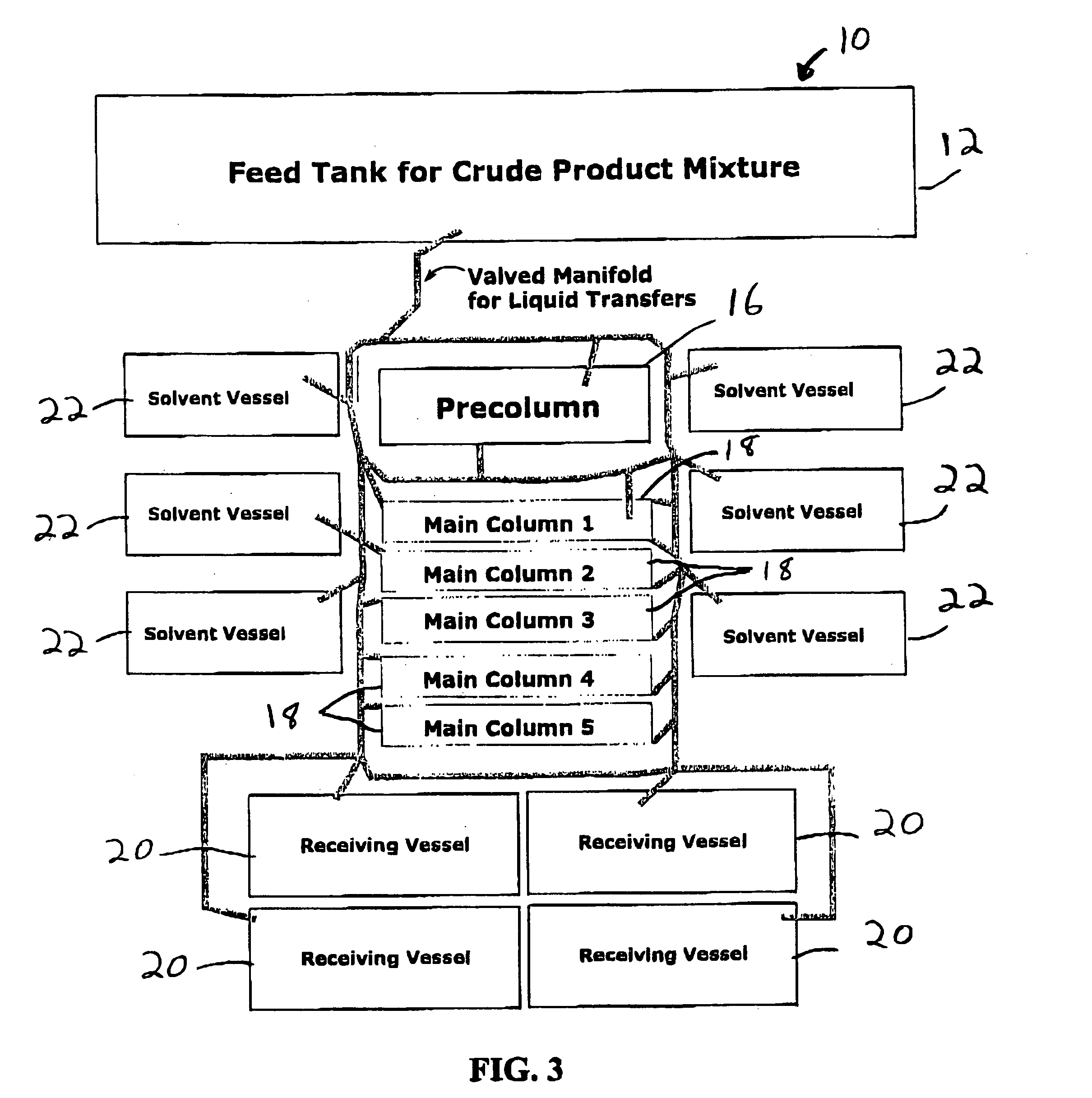Method for preparing functionalized polymers from polymer alcohols
- Summary
- Abstract
- Description
- Claims
- Application Information
AI Technical Summary
Benefits of technology
Problems solved by technology
Method used
Image
Examples
example 1
mPEG (20,000 Da)-Butanoic Acid
A. 4-Bromobutyrate ester of 3-methyl-3-hydroxymethyloxetane (MW=251.12)
3-Methyl-3-hydroxymethyloxetane (10.2 g, 0.1 mole) [Sigma-Aldrich Corporation of St. Louis, Mo.] was dissolved in anhydrous dichloromethane (200 ml) and pyridine (9.8 ml, 0.12 moles) was added. The solution was cooled to 0C and 4-bromobutyryl chloride (18.5 g, 0.1 mole) [Sigma-Aldrich Corporation of St. Louis, Mo.] dissolved in anhydrous dichloromethane (50 ml) was added dropwise over 20 minutes. The mixture was stirred overnight under an argon atmosphere. Next, the reaction mixture was washed with water and dried with anhydrous magnesium sulfate. The solvent was then distilled off under reduced pressure. Yield 23.6 g. NMR (d6-DMSO): 1.26 ppm (s, 3H), 2.07 ppm (m, 2H), 2.51ppm (t, 2H), 3.56 ppm (t, 2H), 4.14 ppm (s, 2H), 4.24 ppm (d, 2H), 4.38 ppm (d, 2H).
B. 1-(3-Bromopropyl)-4-methyl-2,6,7-trioxabicyclo[2,2,2]octane (MW=251.12)
(4-Bromobutanoic acid OBO ester)
Crude 4-bromobuty...
example 2
mPEG (20,000 Da)-Amine
A solution of commercially available PEG (Mn=20,300 Da) (50.0 g, 0.005 equivalents) in toluene (300 ml) was azeotropically dried by distilling off 50 ml toluene. Dichloromethane (60 ml), triethylamine (1.40 ml, 0.0100 moles), and methanesulfonyl chloride (0.35 ml, 0.00452 moles, 90.4% of stoichiometric amount) were added and the mixture was stirred overnight at room temperature under argon atmosphere. The mixture was filtered and the solvents were distilled off under reduced pressure. The residue was dissolved in anhydrous toluene (250 ml) and sodium methoxide (25% solution in methanol, 23.0 ml) was added. The mixture was stirred overnight at 70° C. under an argon atmosphere, filtered and the solvents were distilled off under reduced pressure. The crude product was dissolved in 500 ml distilled water. NaCl (40 g) was added and the pH of the solution was adjusted to 7.2 with 5% phosphoric acid. The product was extracted with dichloromethane. The extract was dr...
example 3
mPEG (20,000 Da)-Carboxylic Acid, Sodium Salt
A solution of commercially available PEG (Mn=20,300 Da, polydispersity 1.040) (50.0 g, 0.005 equivalents) in toluene (300 ml) was azeotropically dried by distilling off 50 ml toluene. Dichloromethane (60 ml), triethylamine (1.30 ml, 0.0093 moles), and methanesulfonyl chloride (0.30 ml, 0.00388 moles, 77.5% of stoichiometric amount) were added and the mixture was stirred overnight at room temperature under an argon atmosphere. The mixture was filtered and the solvents were distilled off under reduced pressure. The residue was dissolved in anhydrous toluene (250 ml) and sodium methoxide (25% solution in methanol, 21.0 ml) was added. The mixture was stirred overnight at 70° C. under an argon atmosphere. The mixture was then filtered and the solvents were distilled off under reduced pressure. The crude product was dissolved in 500 ml distilled water, NaCl (40 g) was added and the pH of the solution was adjusted to 7.2 with 5% phosphoric aci...
PUM
| Property | Measurement | Unit |
|---|---|---|
| Fraction | aaaaa | aaaaa |
| Fraction | aaaaa | aaaaa |
| Fraction | aaaaa | aaaaa |
Abstract
Description
Claims
Application Information
 Login to View More
Login to View More - R&D
- Intellectual Property
- Life Sciences
- Materials
- Tech Scout
- Unparalleled Data Quality
- Higher Quality Content
- 60% Fewer Hallucinations
Browse by: Latest US Patents, China's latest patents, Technical Efficacy Thesaurus, Application Domain, Technology Topic, Popular Technical Reports.
© 2025 PatSnap. All rights reserved.Legal|Privacy policy|Modern Slavery Act Transparency Statement|Sitemap|About US| Contact US: help@patsnap.com



